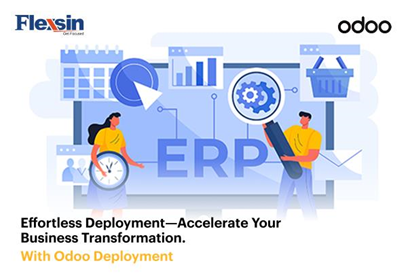In today’s business environment, having the right tools to manage your operations is crucial. With numerous options available, Odoo stands out as one of the most versatile and powerful ERP systems on the market. But how do you ensure a successful Odoo implementation?
Did you know that over 4 million users worldwide have chosen Odoo to streamline their operations? This software offers a suite of integrated apps that can help businesses manage everything from sales to finance, inventory, human resources, and more. But with such a comprehensive system, a successful implementation requires more than just buying software. It requires a well-thought-out plan, skilled consultants, and expert support to ensure everything runs smoothly.
In this guide, we will walk you through the steps of successfully implementing Odoo ERP software, from initial planning to full-scale deployment, helping you maximize its potential for your business. If you’re considering Odoo for your business or in the middle of implementation, this is your go-to resource.
How to Prepare for Odoo Implementation
1. Understanding Your Business Requirements
Before diving into the Odoo implementation process, it’s essential to have a clear understanding of your business needs. What pain points are you trying to solve with Odoo? Are you looking to streamline inventory management, improve customer relationships, or automate financial reporting? Identifying your goals will help you select the right Odoo apps and features for your business.
Work closely with stakeholders across departments to get a clear picture of the current processes and where improvements can be made. You might also want to analyze your workflows and determine which processes are redundant or could be optimized.
2. Assessing System Requirements
Once you have a clear understanding of your needs, it’s time to assess your system requirements. Will Odoo be cloud-hosted or installed on-premises? If you choose cloud hosting, you’ll benefit from scalability, regular updates, and a lower upfront cost. However, on-premises hosting might offer more control over your data security and infrastructure.
It’s important to work with your IT team or external consultants to assess your existing infrastructure and ensure it aligns with Odoo’s system requirements.
Step-by-Step Process for a Successful Odoo Implementation
1. Setting Clear Objectives
At the core of every successful Odoo implementation is a clear, achievable goal. What are the measurable outcomes you expect from using Odoo? Whether it’s reducing manual processes, increasing sales, or improving operational efficiency, defining success metrics will help guide the implementation process. These objectives should be aligned with your overall business strategy, so that every team understands the bigger picture and can work towards a unified goal.
2. Odoo ERP System Setup & Customization
Once the objectives are clear, it’s time to set up your Odoo ERP system. This involves installing Odoo, configuring it according to your business requirements, and customizing the software to meet your specific needs.
Customization is one of Odoo’s strengths. With over 30 applications covering sales, inventory, project management, and more, you can tailor Odoo to your business processes. This ensures you don’t just adopt a generic ERP system, but one that is perfectly aligned with how your business operates.
This phase also involves training your internal teams and ensuring they understand how to navigate and use the system. Providing adequate training is critical for maximizing the software’s efficiency.
3. Testing the Implementation
Before going live, testing is a vital step. Conduct user acceptance testing (UAT) to make sure that everything works as expected. Have team members simulate real-world scenarios and test critical functions like invoicing, reporting, and data syncing. This will help catch any issues before the system goes live and prevent future disruptions.
Key Factors for Successful Odoo Implementation
1. Choosing the Right Odoo Implementation Services
Selecting the right Odoo implementation services is essential for a smooth experience. Odoo implementation requires in-depth knowledge of both the software and your business requirements. Experienced consultants can guide you through the process, ensuring that the system is correctly configured and that your business gets the most out of Odoo’s functionality.
At Flexsin, our Odoo experts can help you assess your requirements, set realistic timelines, and choose the best modules for your business. We specialize in offering tailored Odoo implementation services that match your specific needs.
2. The Role of Odoo ERP Integration
One of the primary advantages of Odoo ERP is its ability to integrate with other systems. Whether you’re integrating accounting software, CRM platforms, or third-party eCommerce systems, Odoo offers a range of integration solutions.
Smooth integration ensures that data flows seamlessly between systems, reducing the risk of errors and data duplication. This integration plays a key role in enhancing the efficiency of your business processes.
3. Ensuring Seamless Odoo System Integration
A successful Odoo system integration is critical to ensure all your business processes are functioning harmoniously. From syncing data across different apps to ensuring that updates happen in real-time, system integration is essential for eliminating manual data entry and maintaining consistency.
This phase may require support from both your IT team and external consultants. The goal is to create a fully integrated system that works together efficiently to automate and streamline processes.
Challenges in Odoo Implementation and How to Overcome Them
1. Addressing Common Roadblocks
Even with careful planning, some challenges may arise during the implementation of Odoo ERP. Some of the most common issues include resistance to change, lack of proper training, and data migration difficulties.
Overcoming these challenges starts with having a solid change management plan. Communicate the benefits of Odoo to your team and provide the necessary training and support. Ensuring your team is on board with the new system can significantly smooth the transition.
2. Building a Strong Support System
After the implementation phase, it’s essential to have a reliable support system in place. Odoo’s open-source nature makes it easier for developers to customize and troubleshoot, but having experts on hand who are familiar with your system can reduce the risk of potential downtime.
Having a trusted partner like Flexsin ensures that you have expert guidance whenever you need it.
The Path to Odoo Success
Odoo implementation can be an incredibly rewarding experience for businesses looking to optimize their operations and drive growth. By understanding your requirements, setting clear objectives, and selecting the right Odoo implementation services, you can ensure a smooth transition and unlock the full potential of Odoo ERP.
Partner with Flexsin for expert guidance, we specialize in Odoo ERP implementation, integration, and customization to fit your unique business needs. Ready to streamline your operations and boost efficiency? Contact us today to get started with Odoo.


 Sudhir K Srivastava
Sudhir K Srivastava



